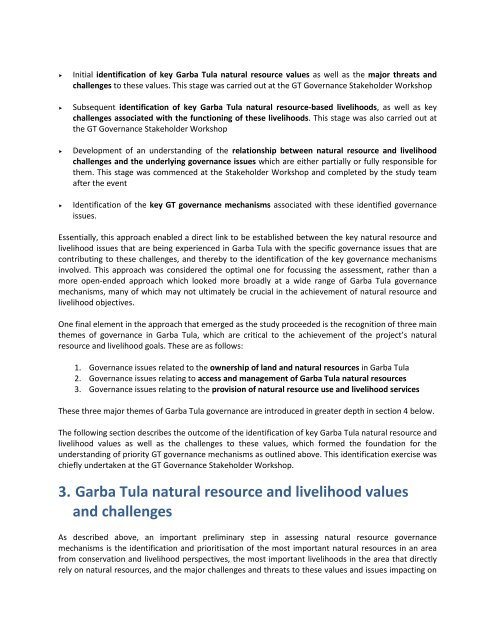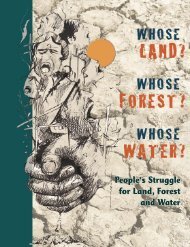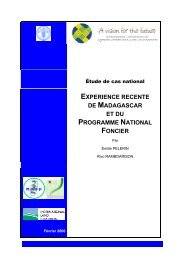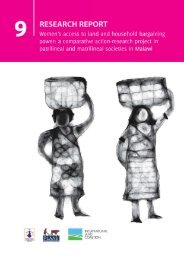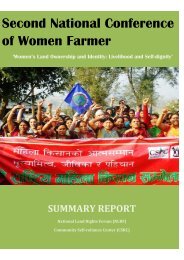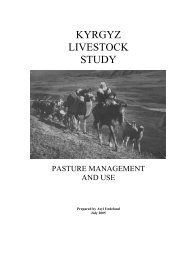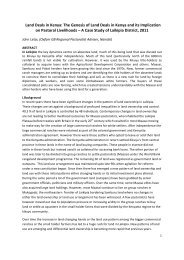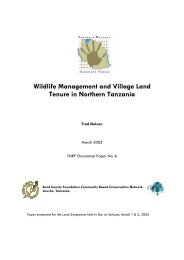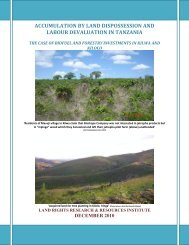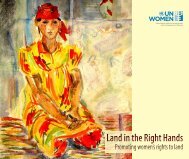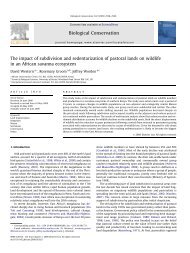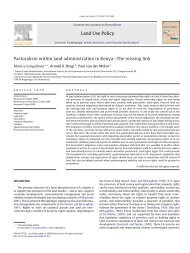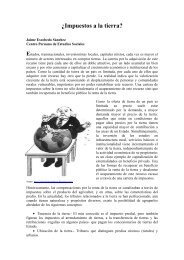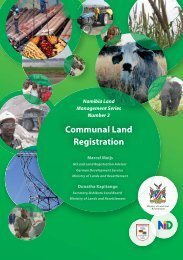Garba Tula Governance Assessment Final Report ... - Land Portal
Garba Tula Governance Assessment Final Report ... - Land Portal
Garba Tula Governance Assessment Final Report ... - Land Portal
You also want an ePaper? Increase the reach of your titles
YUMPU automatically turns print PDFs into web optimized ePapers that Google loves.
Initial identification of key <strong>Garba</strong> <strong>Tula</strong> natural resource values as well as the major threats and<br />
challenges to these values. This stage was carried out at the GT <strong>Governance</strong> Stakeholder Workshop<br />
Subsequent identification of key <strong>Garba</strong> <strong>Tula</strong> natural resource-based livelihoods, as well as key<br />
challenges associated with the functioning of these livelihoods. This stage was also carried out at<br />
the GT <strong>Governance</strong> Stakeholder Workshop<br />
Development of an understanding of the relationship between natural resource and livelihood<br />
challenges and the underlying governance issues which are either partially or fully responsible for<br />
them. This stage was commenced at the Stakeholder Workshop and completed by the study team<br />
after the event<br />
Identification of the key GT governance mechanisms associated with these identified governance<br />
issues.<br />
Essentially, this approach enabled a direct link to be established between the key natural resource and<br />
livelihood issues that are being experienced in <strong>Garba</strong> <strong>Tula</strong> with the specific governance issues that are<br />
contributing to these challenges, and thereby to the identification of the key governance mechanisms<br />
involved. This approach was considered the optimal one for focussing the assessment, rather than a<br />
more open-ended approach which looked more broadly at a wide range of <strong>Garba</strong> <strong>Tula</strong> governance<br />
mechanisms, many of which may not ultimately be crucial in the achievement of natural resource and<br />
livelihood objectives.<br />
One final element in the approach that emerged as the study proceeded is the recognition of three main<br />
themes of governance in <strong>Garba</strong> <strong>Tula</strong>, which are critical to the achievement of the project’s natural<br />
resource and livelihood goals. These are as follows:<br />
1. <strong>Governance</strong> issues related to the ownership of land and natural resources in <strong>Garba</strong> <strong>Tula</strong><br />
2. <strong>Governance</strong> issues relating to access and management of <strong>Garba</strong> <strong>Tula</strong> natural resources<br />
3. <strong>Governance</strong> issues relating to the provision of natural resource use and livelihood services<br />
These three major themes of <strong>Garba</strong> <strong>Tula</strong> governance are introduced in greater depth in section 4 below.<br />
The following section describes the outcome of the identification of key <strong>Garba</strong> <strong>Tula</strong> natural resource and<br />
livelihood values as well as the challenges to these values, which formed the foundation for the<br />
understanding of priority GT governance mechanisms as outlined above. This identification exercise was<br />
chiefly undertaken at the GT <strong>Governance</strong> Stakeholder Workshop.<br />
3. <strong>Garba</strong> <strong>Tula</strong> natural resource and livelihood values<br />
and challenges<br />
As described above, an important preliminary step in assessing natural resource governance<br />
mechanisms is the identification and prioritisation of the most important natural resources in an area<br />
from conservation and livelihood perspectives, the most important livelihoods in the area that directly<br />
rely on natural resources, and the major challenges and threats to these values and issues impacting on


